Isabela – Galapagos’ Largest Island
In the last post our Adventures Abroad group enjoyed a day on the water visiting famed Kicker Rock on the island of San Cristobal. Our two days on the island were just enough to get a taste of what makes the Galapagos archipelago so unique and now we will continue to find out more about the islands as we travel to Isabela, the largest of the group. Here we hope to see some of the species that can only be found in the Galapagos including its unique penguins, flamingos and giant tortoises. Please join us on what will be another fascinating journey.
The fun begins at the airport on San Cristobal where our group splits into two groups to each board a Britten-Norman nine seater Islander for a less than one hour flight to Isabela.
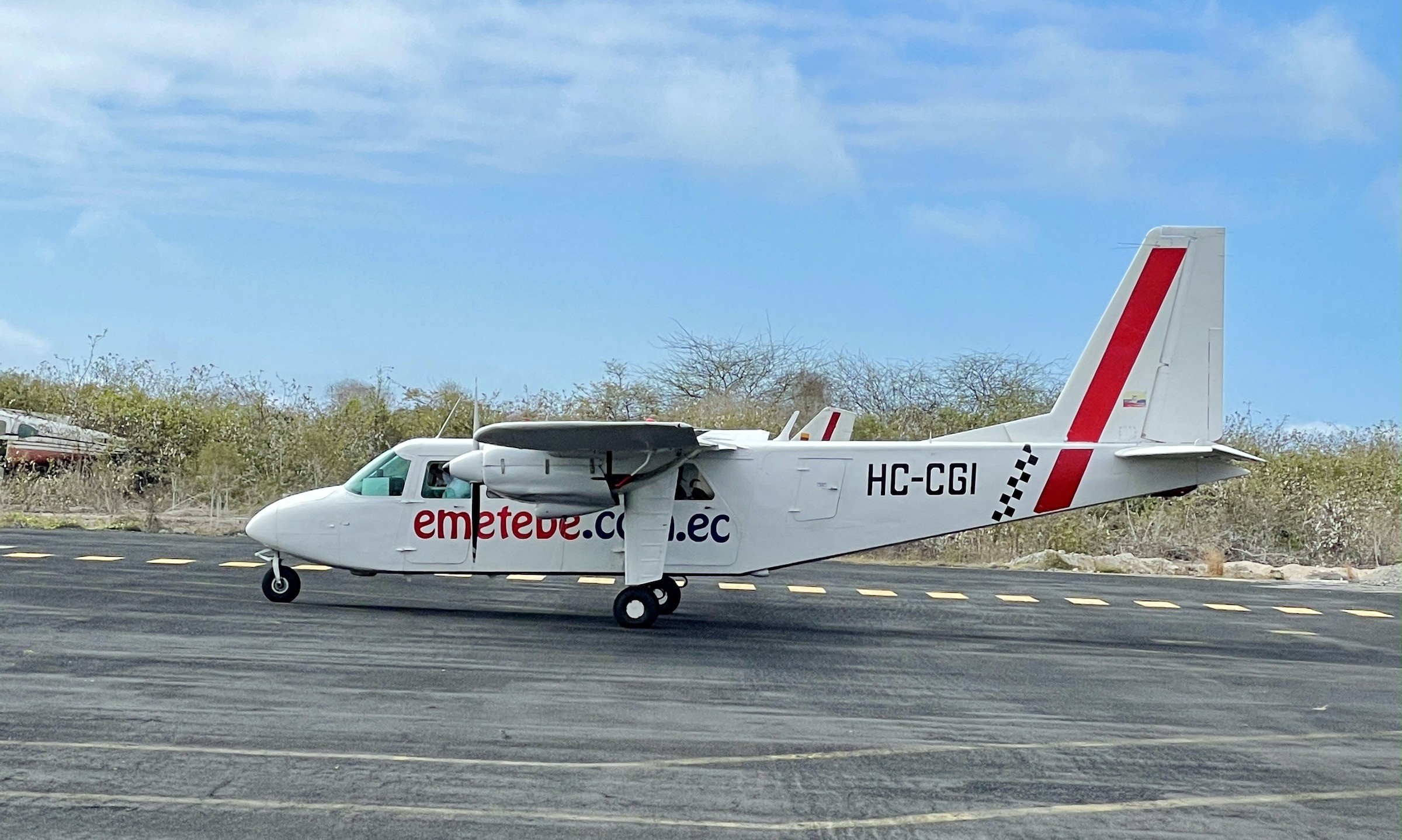
These planes are essentially flying tin cans. They are so noisy you need to wear a headset while flying, but they are very reliable. The last time I was on one was a flight to and from Halifax airport to Sable Island where you need to land on an ad hoc runway on the sand. Compared to that, taking off and landing on a paved runway should be a cinch; and it is. We get good views of Santa Cruz island as we fly right over it before landing at the tiny airport on Isabela.
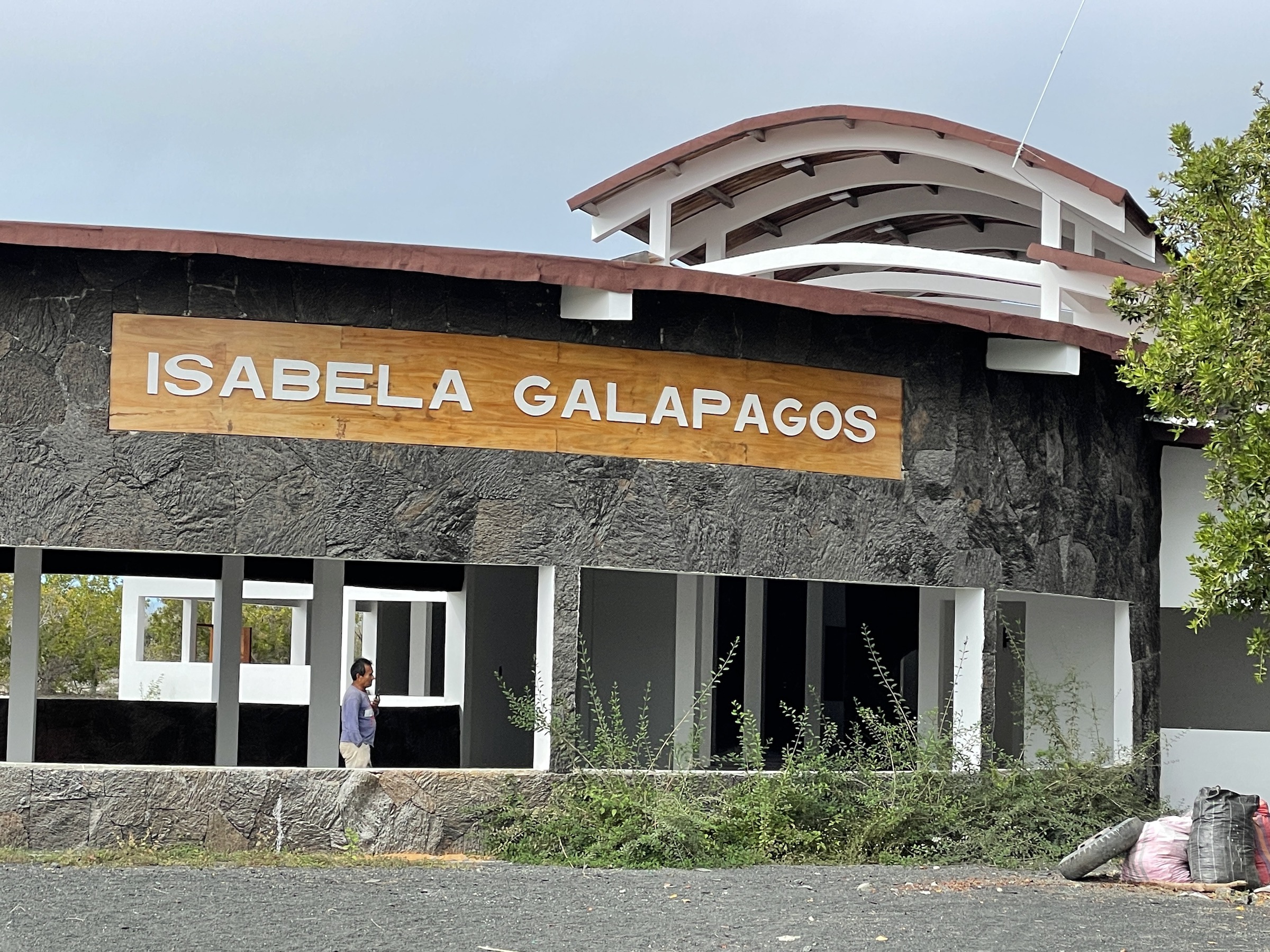
From the airport on Isabela it’s a very short ride into Puerto Villamil the small town that is the main settlement on the island. We will spend three nights at the Casa de Marita which has a beautiful location on a wide sandy beach that seems to stretch for miles.
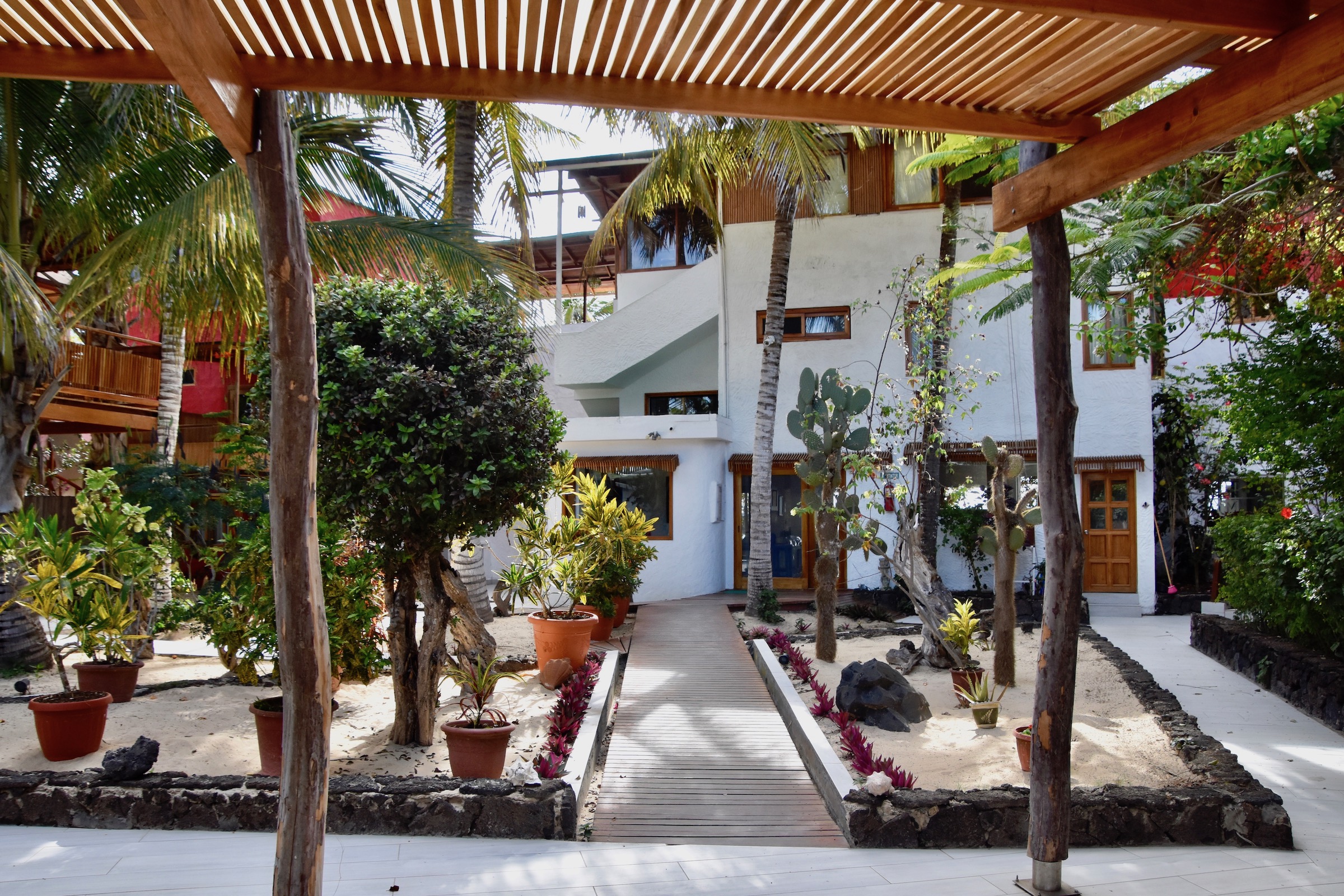
After checking in we have some free time to explore before heading out on our first excursion on Isabela. We opt to head for the beach, not to swim, but just to walk it. It’s virtually deserted and completely wild with waves crashing on the solidified lava from the eruptions on this youngest of the Galapagos Islands.
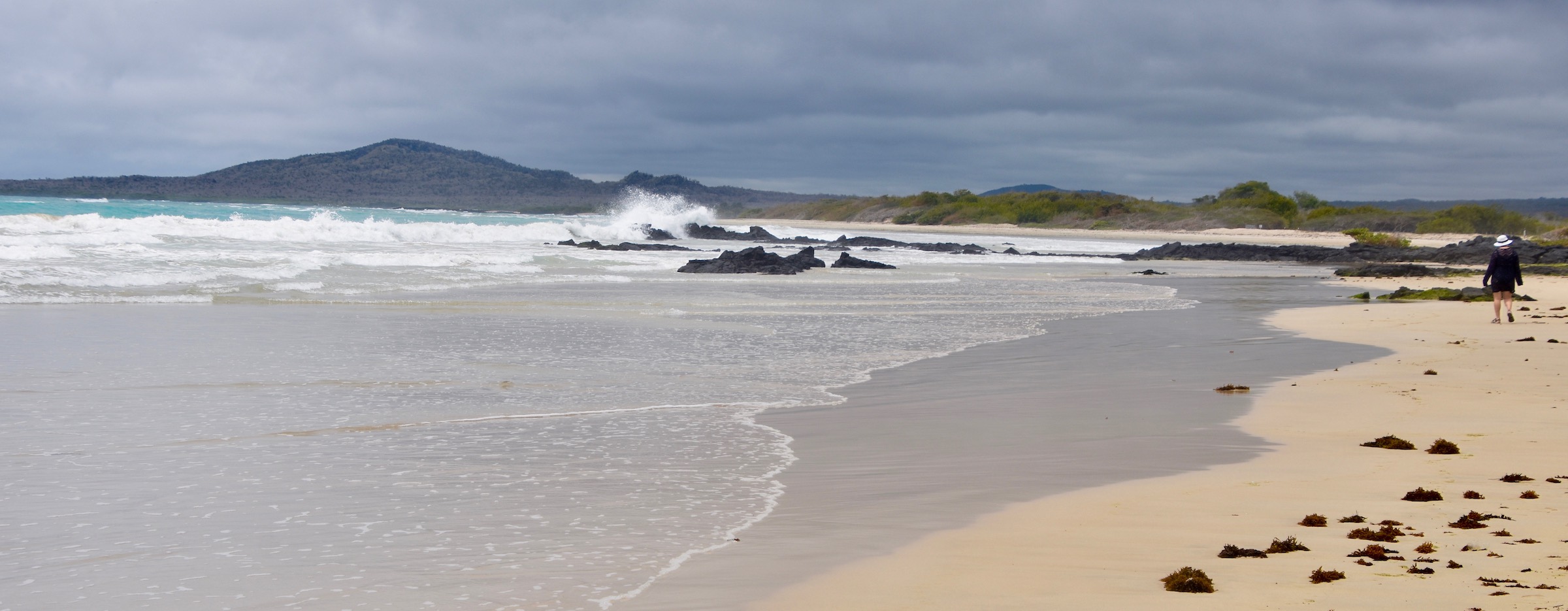
There is an old pier from where we can get a look back at the hotel.
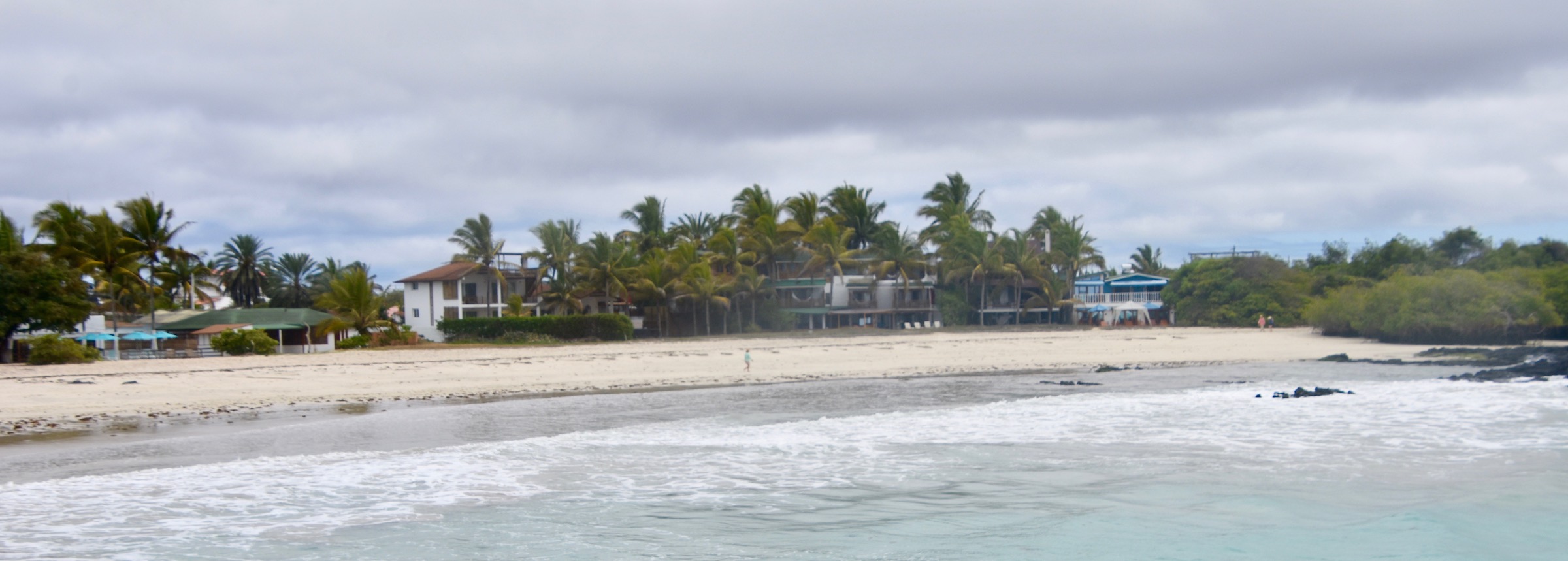
The pier is also home to a lot of young marine iguanas who are just basking in the sun.
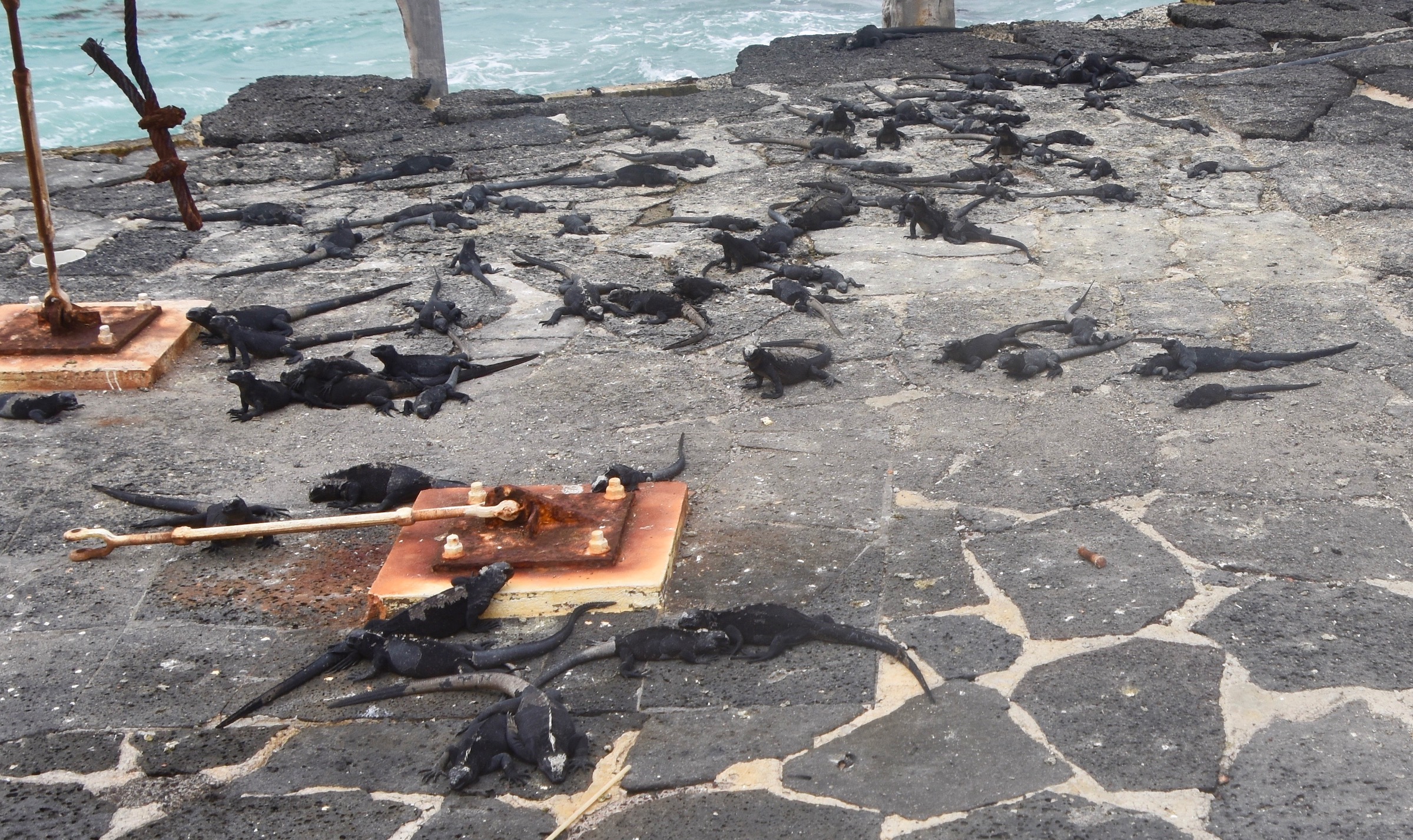
Whimbrels are not that common back home, but I’m starting to notice that they are found quite regularly on the Galapagos and unlike many of the other bird species I have seen so far, these birds migrate through here from the mainland and are not an endemic species. How they know to find their way to a place as remote as the Galapagos remains a mystery.
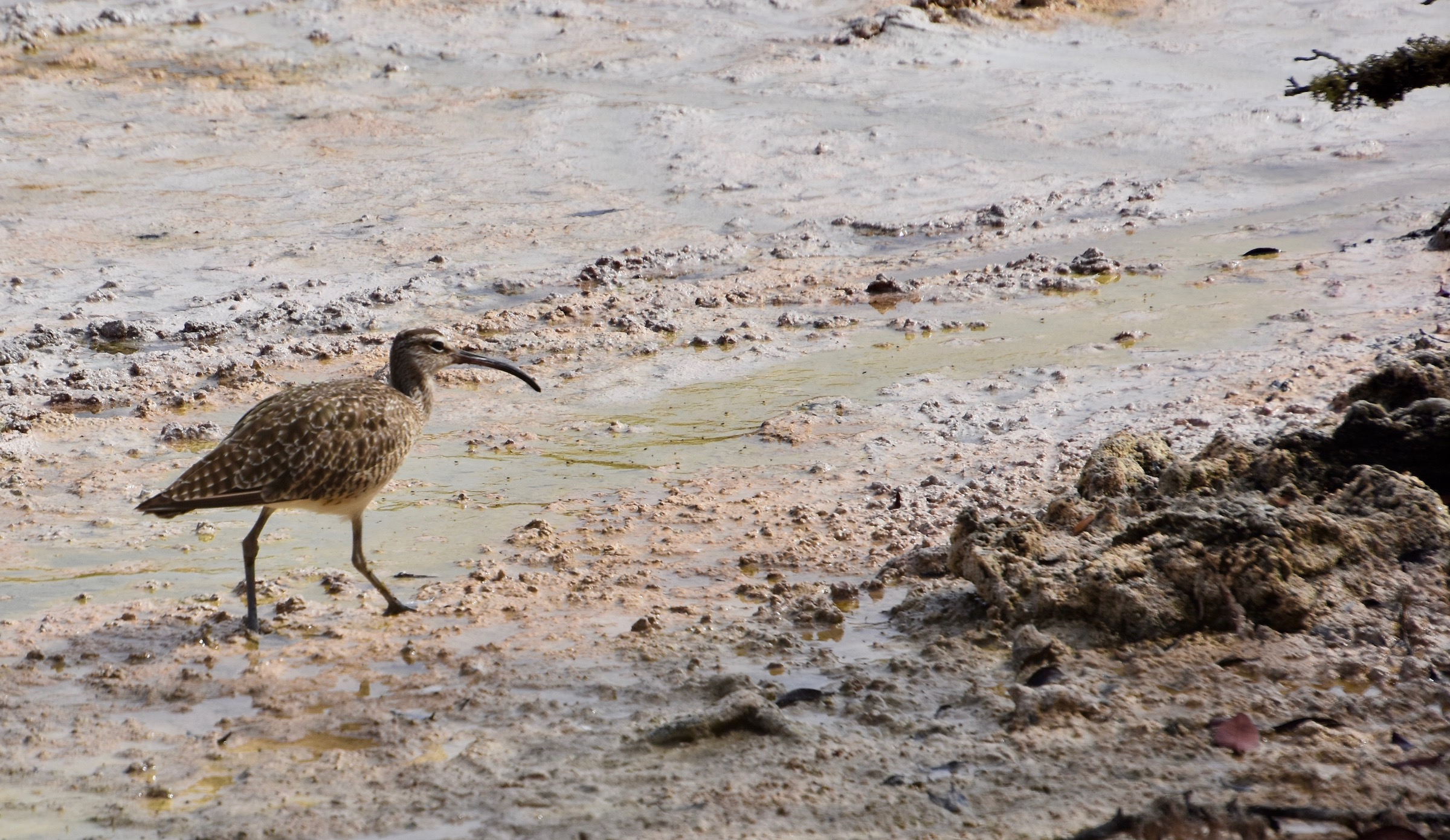
We conclude our walk on the beach with a photo taken by the only other couple we ran into.
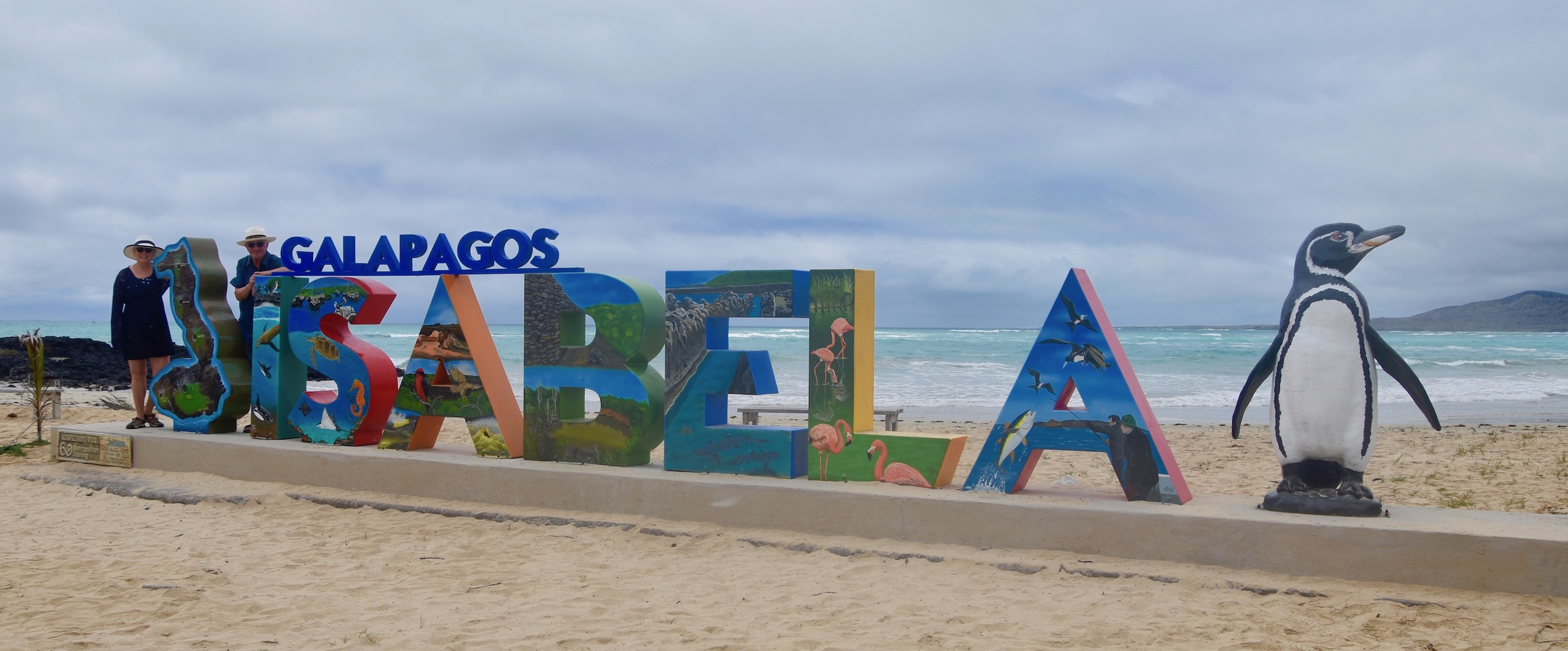
Las Tintoreras Islet, Isabela
Our first excursion on Isabela will take place on water and land as we journey the short distance to Las Tintoreras Islet where we hope see more of the endemic species for which the archipelago is famous. The embarkation point is already occupied by a group of lazing sea lions which we have to walk around to get onto the boat.
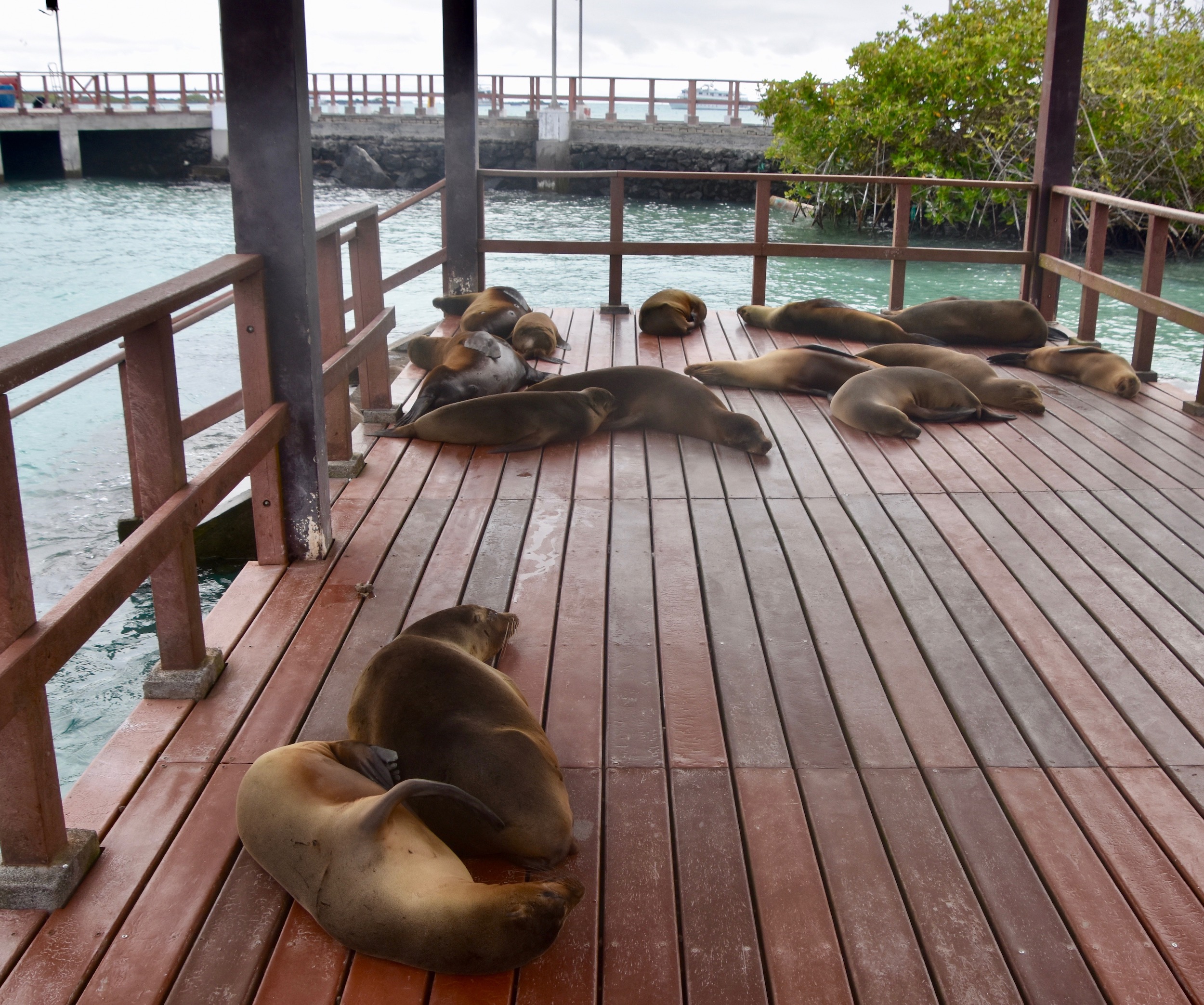
We are accompanied by our local guide on Isabela, Pablito who is an expert on all things related to his native island.
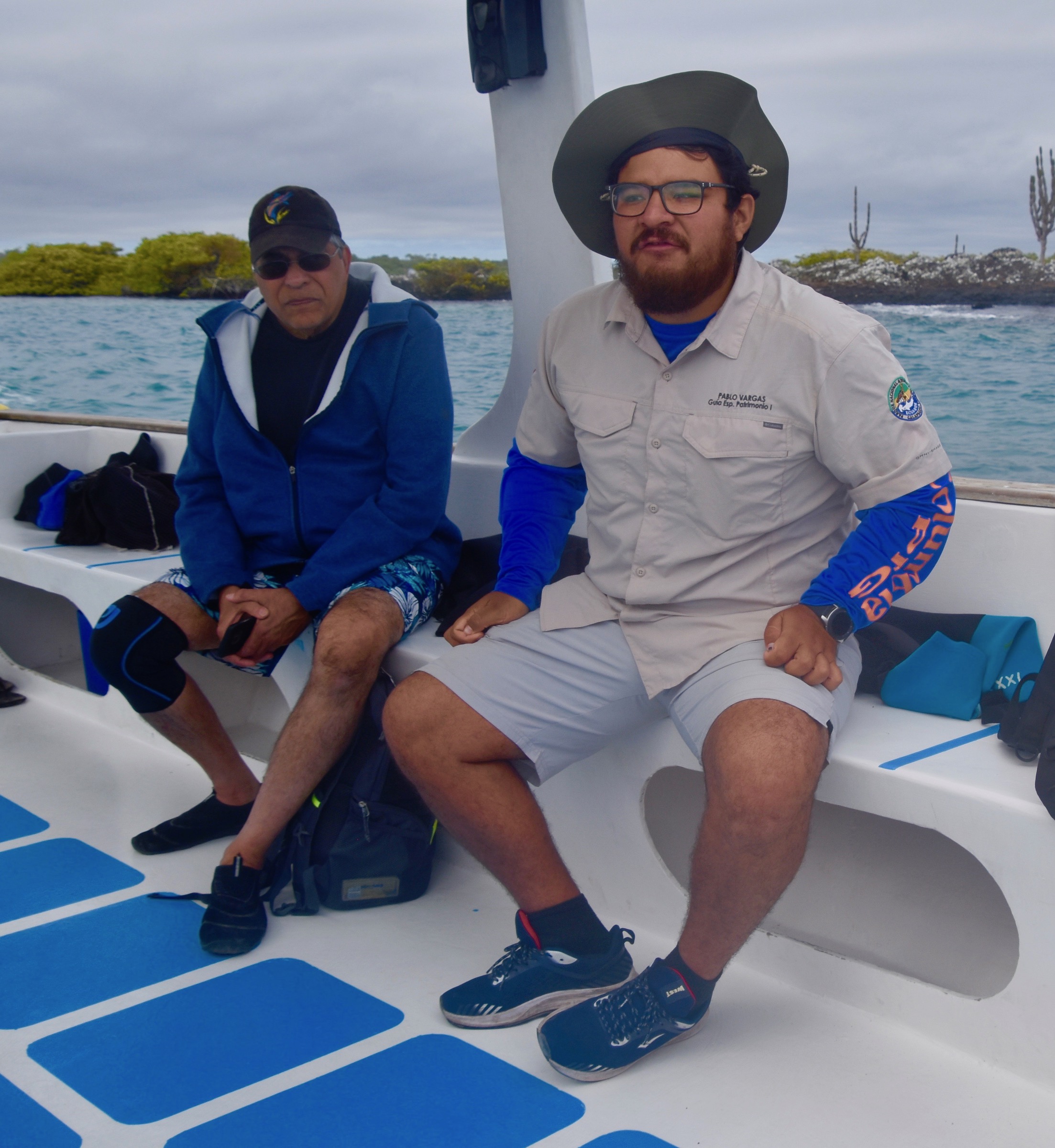
It’s only a short distance from the wharf to the landing on Tintoreras Islet, but there is a commotion going on not far away and we head toward it first. A couple of fishermen are cleaning their catch and it has attracted a swarm of frigate birds.
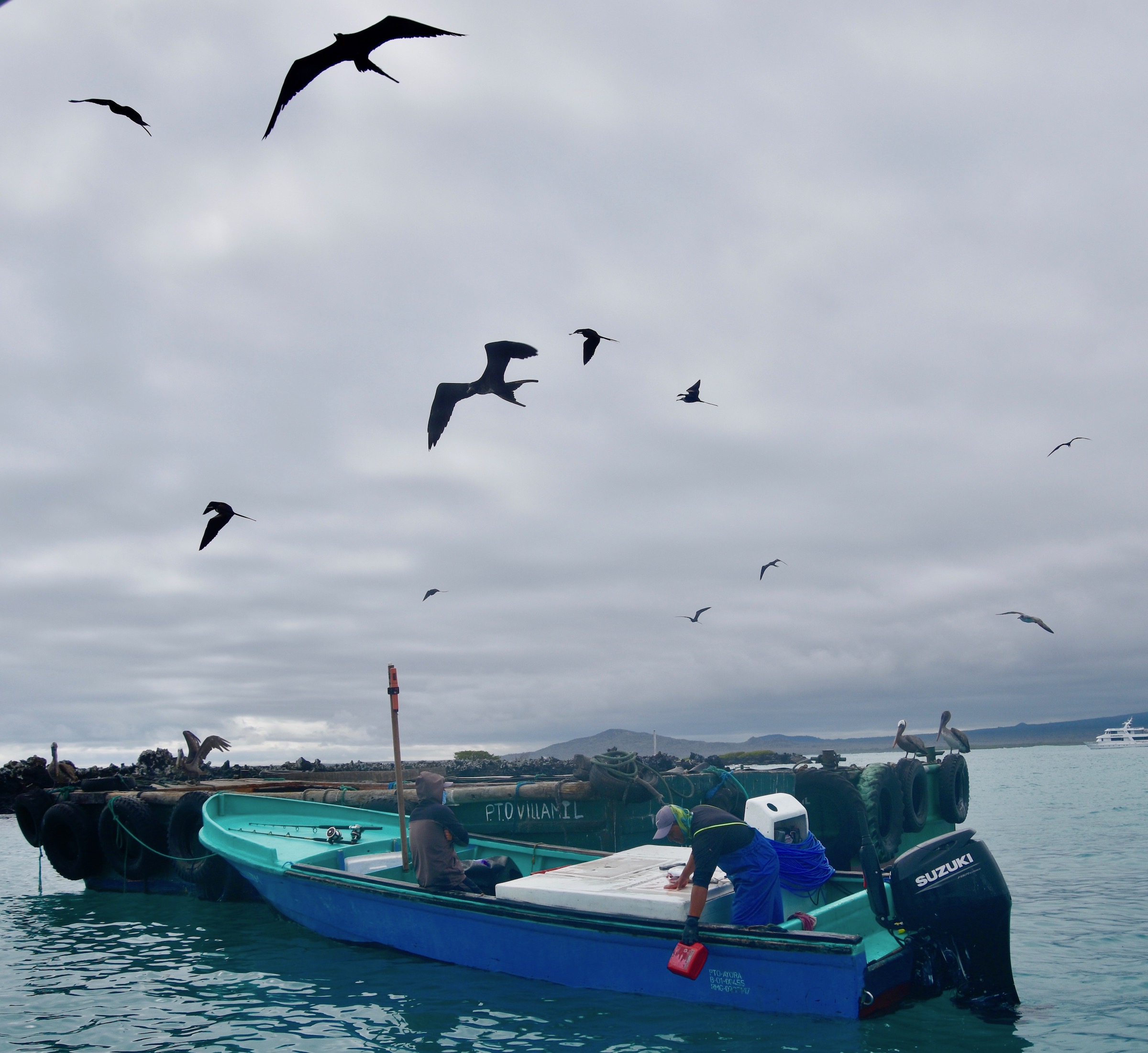
Usually these birds, which are fierce predators, are seen high in the air circling on the updrafts, but these ones are so close you could almost reach out and grab them. If you have ever seen Alfred Hitchcock’s The Birds, then you will get an idea of just how creepy it was to be swarmed by these large birds.
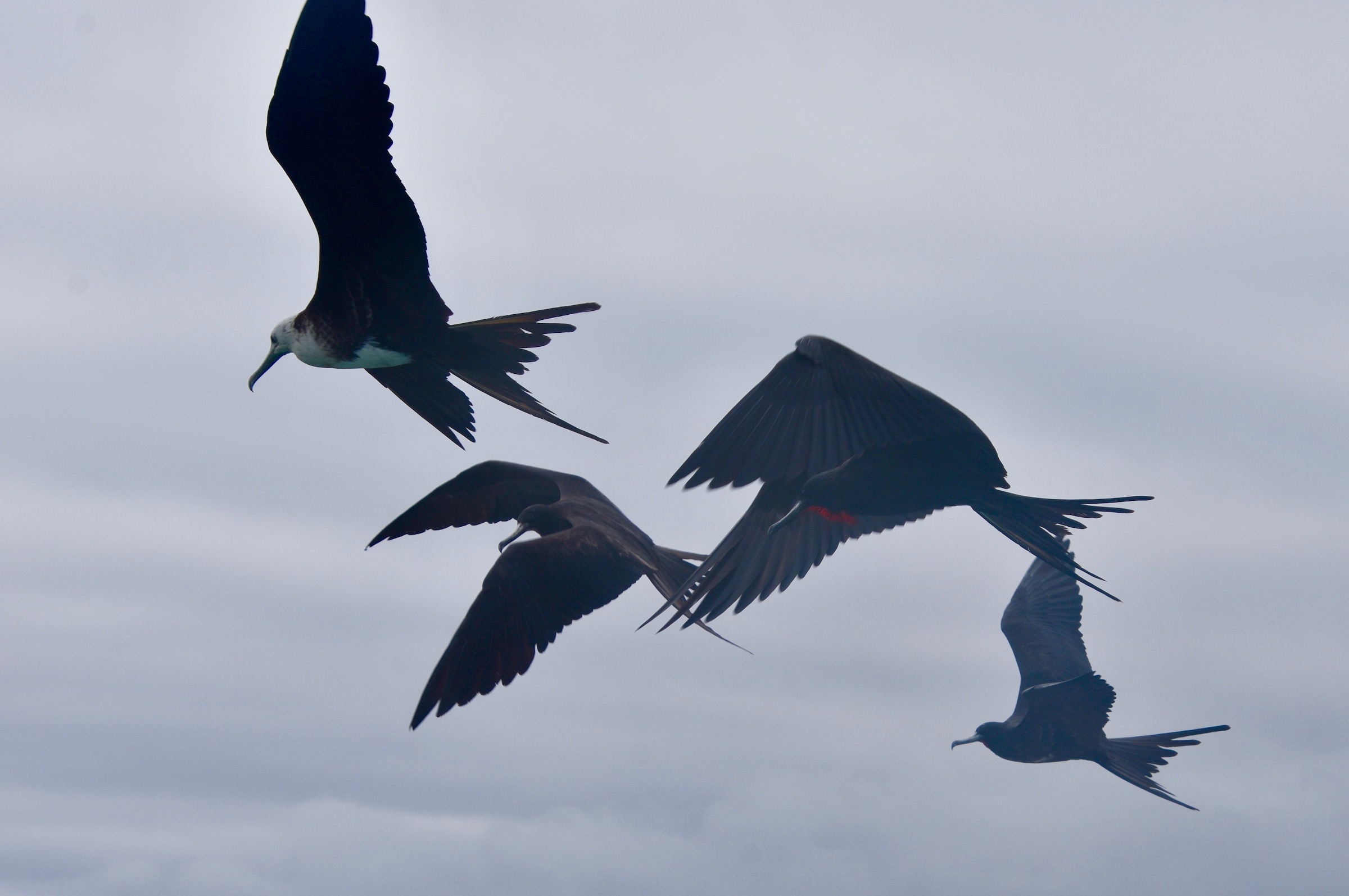
The fish remains have attracted not only the frigate birds, but some pretty large sharks as well. We are fine where we are, but I’m not so sure about these kayakers as the sharks are literally just underneath them at times and it wouldn’t take much to tip them over into the middle of a shark feeding frenzy. Fortunately that doesn’t happen and we don’t get to witness a real life version of Jaws.
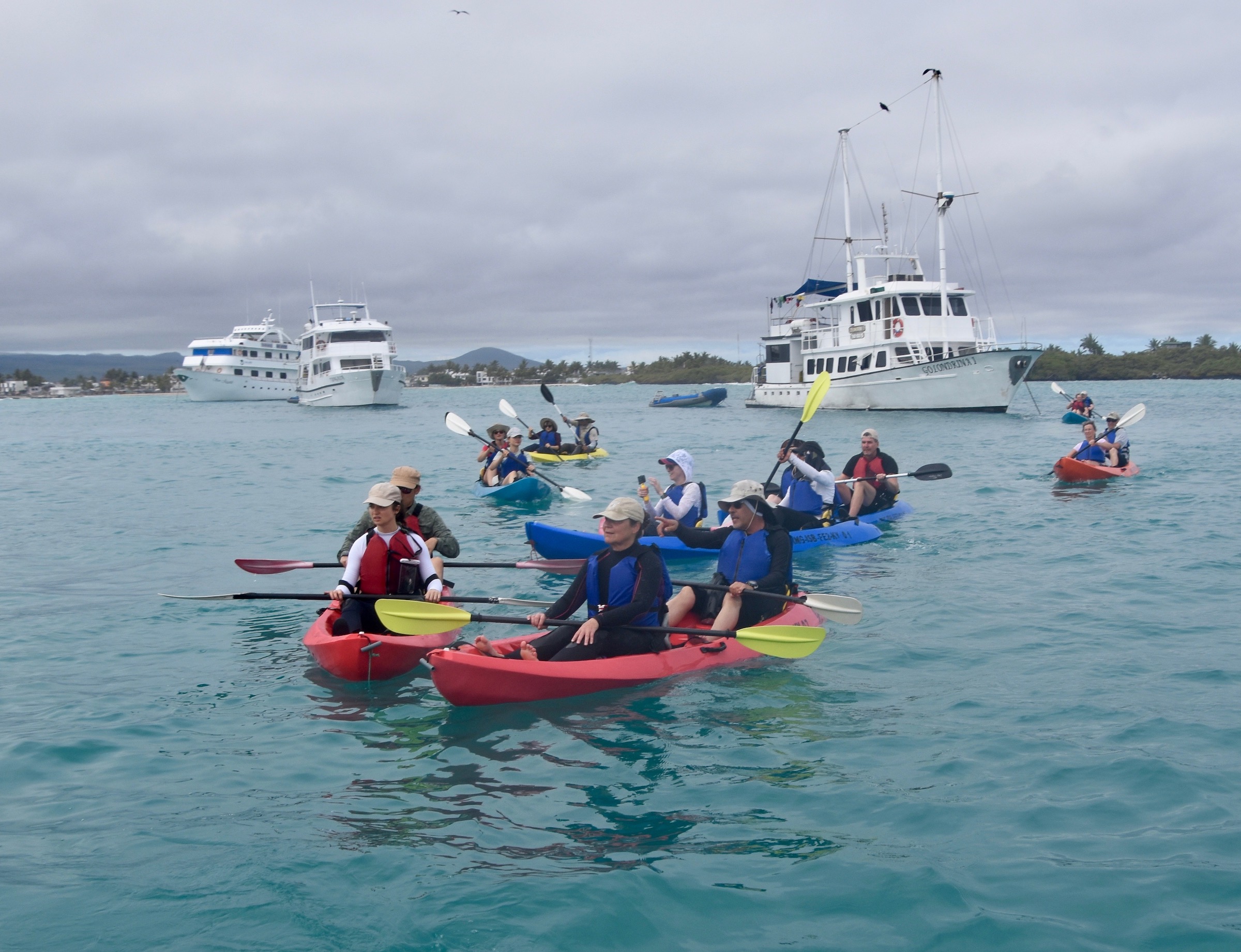
Nearby, oblivious to the pandemonium caused by the frigate birds are these two lava gulls, a species endemic to the Galapagos. They are also unconcerned about being the rarest gulls in the world.
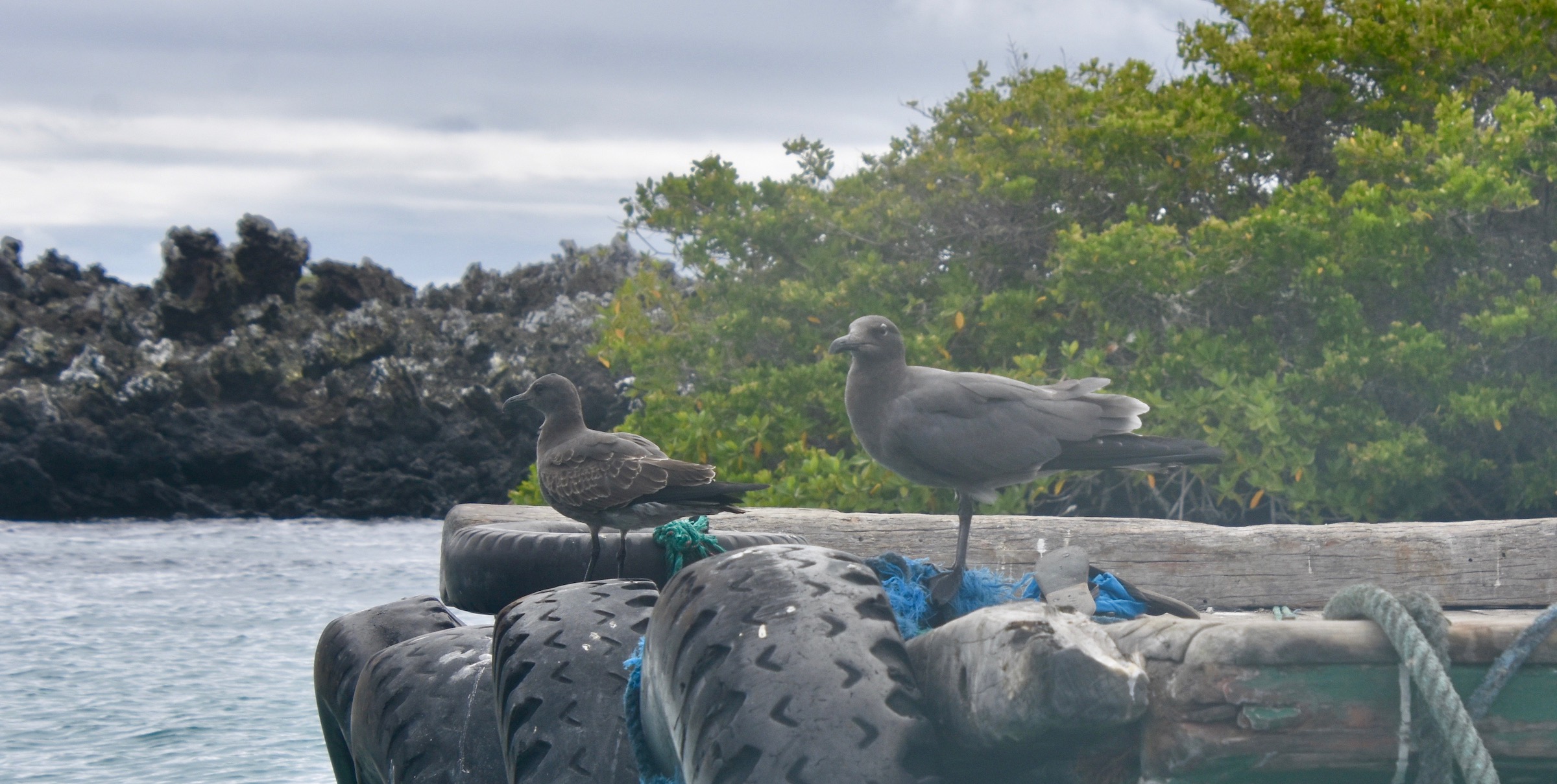
Leaving behind the frigate birds, sharks and kayakers we head for Tintoreras Islet and before even reaching the landing we record two more avian highlights. Two blue-footed boobies are so close we could almost reach out and touch them, but like with the frigate birds we don’t. Those bills are formidable.
These boobies are not endemic to the Galapagos, but over half of all the species lives and breeds here. I’ve seen a few before off the west coast of Mexico. but never in this type of proximity. 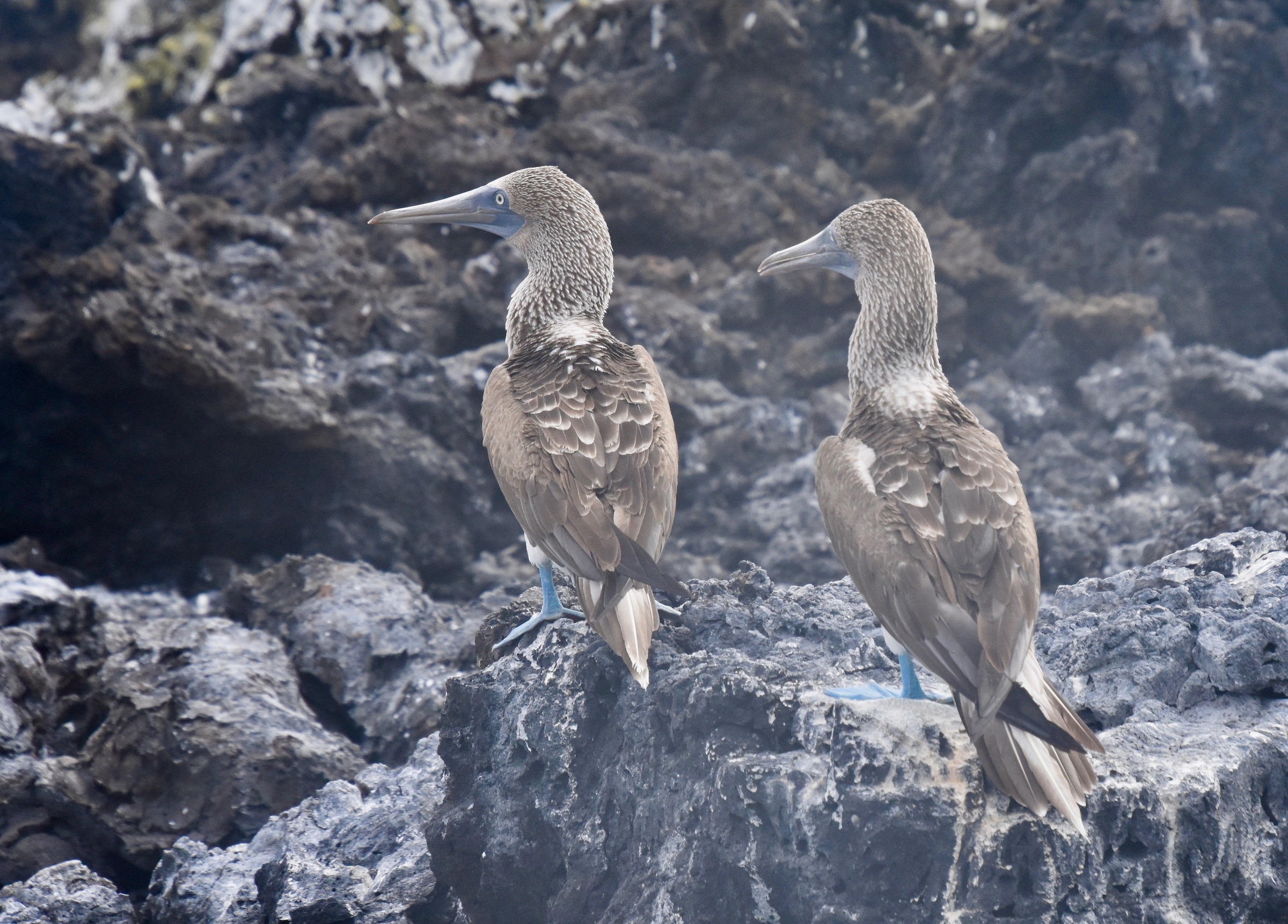 Blue Footed Boobies
Blue Footed Boobies
The Galapagos penguins are another matter. These birds are only found on a few islands in the Galapagos and are the only penguins found north of the equator. It is only because the waters of the Humboldt current are so cold that these normal denizens of Antarctic waters can survive this far north. I have to assume that they were led here by that famous cartoon penguin who was always looking for warmer climes, Chilly Willy.
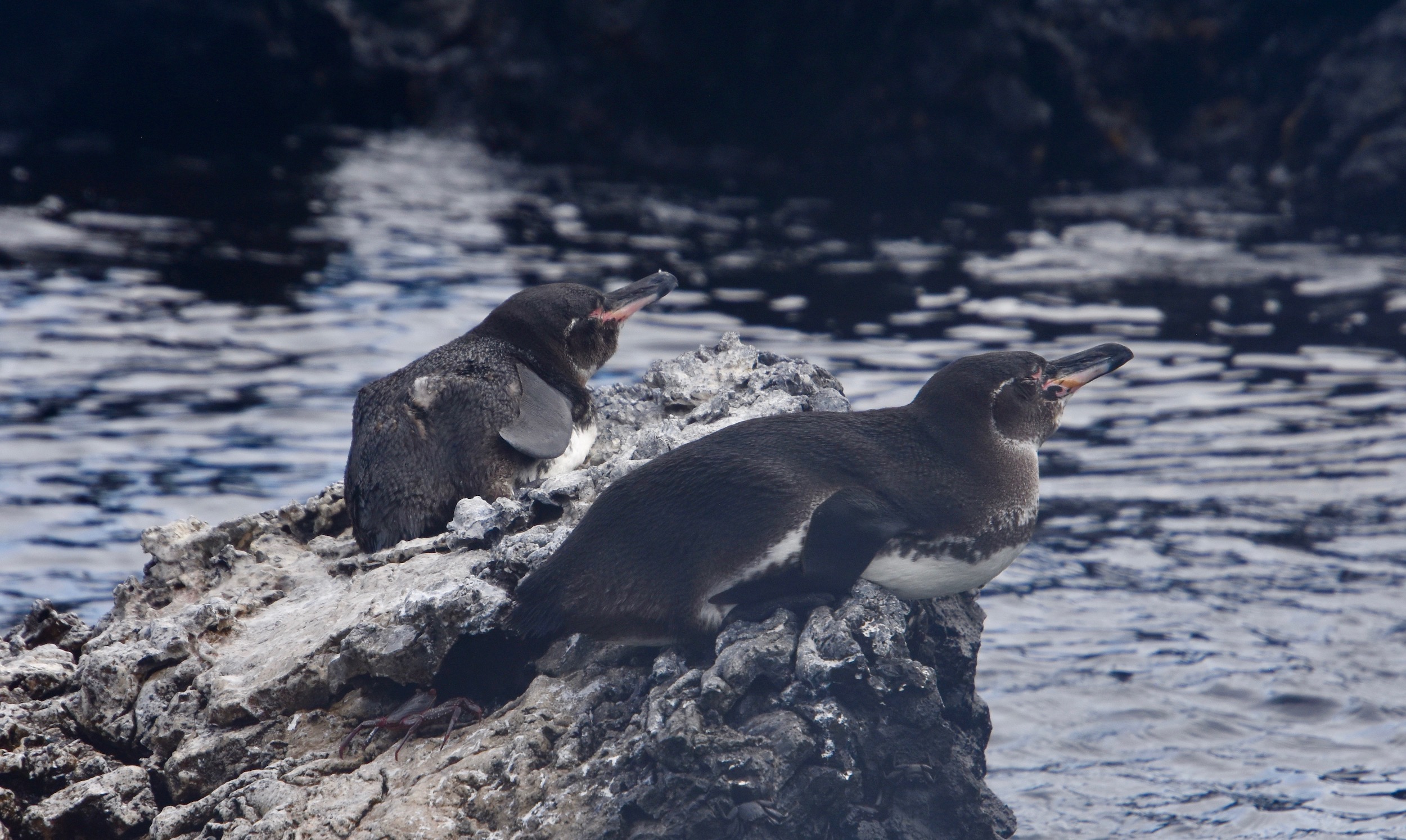
Chilly or not, these penguins can literally fly through the water at amazing speeds, creating a wake on the surface that astonished us at first, because we could not believe that a bird and not a fish was making them. This is a great sighting and was one of the species I most wanted to see on this trip. Sadly there are only about 1,800 of these birds left in the wild and another El Nino could well wipe them out.
In a matter of minutes we have spotted the rarest gulls and penguins on earth. Wow!
After we all finish photographing the penguins and boobies we do finally land on Tintoreras Islet which is really nothing more than a few acres of razor sharp lava with a circular path winding around it.
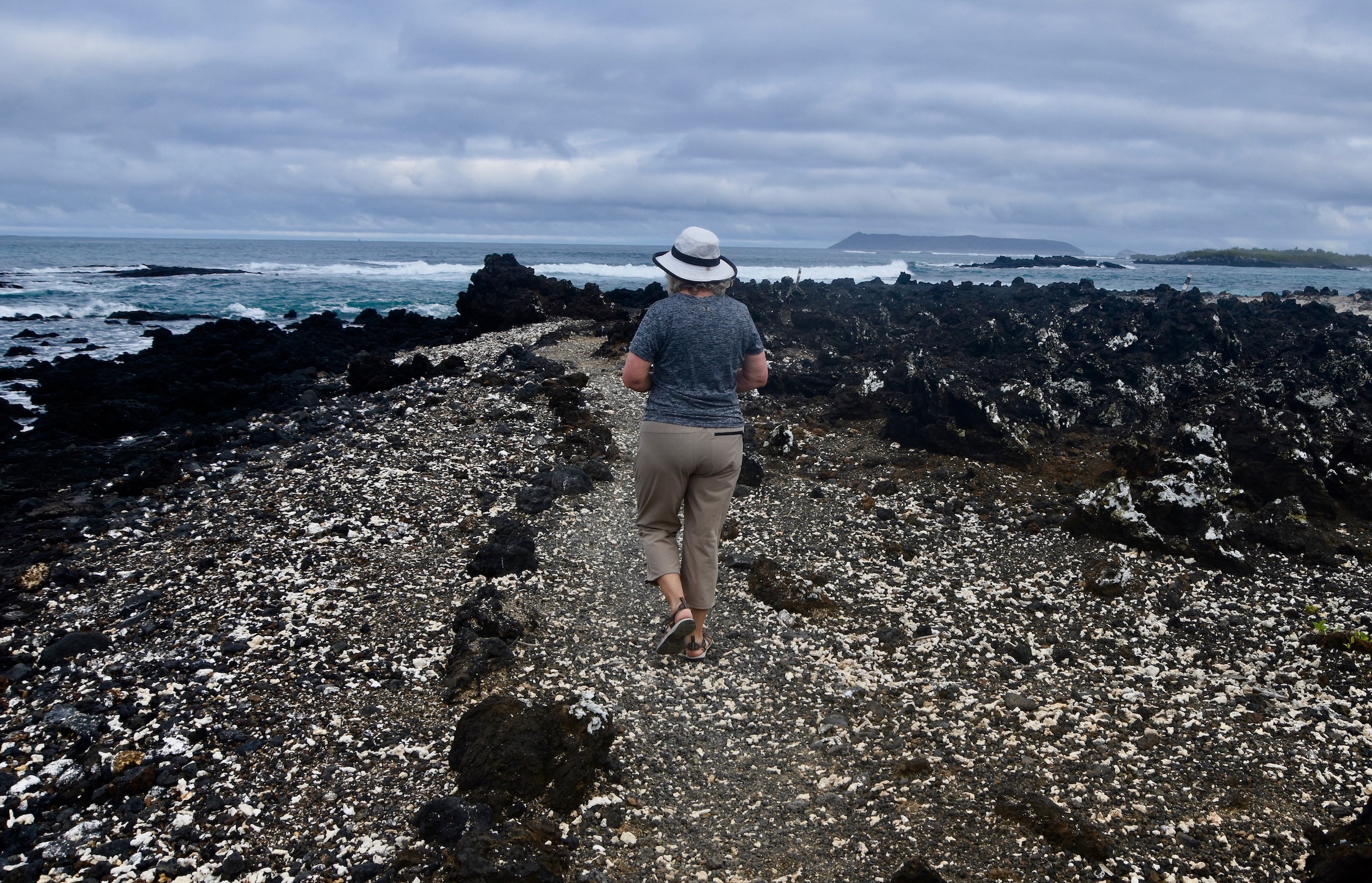
Incredibly a sea lion has somehow managed to drag itself through this mire of rock to have a siesta in the middle of it. I’m starting to realize that these guys can pop up anywhere on the Galapagos.
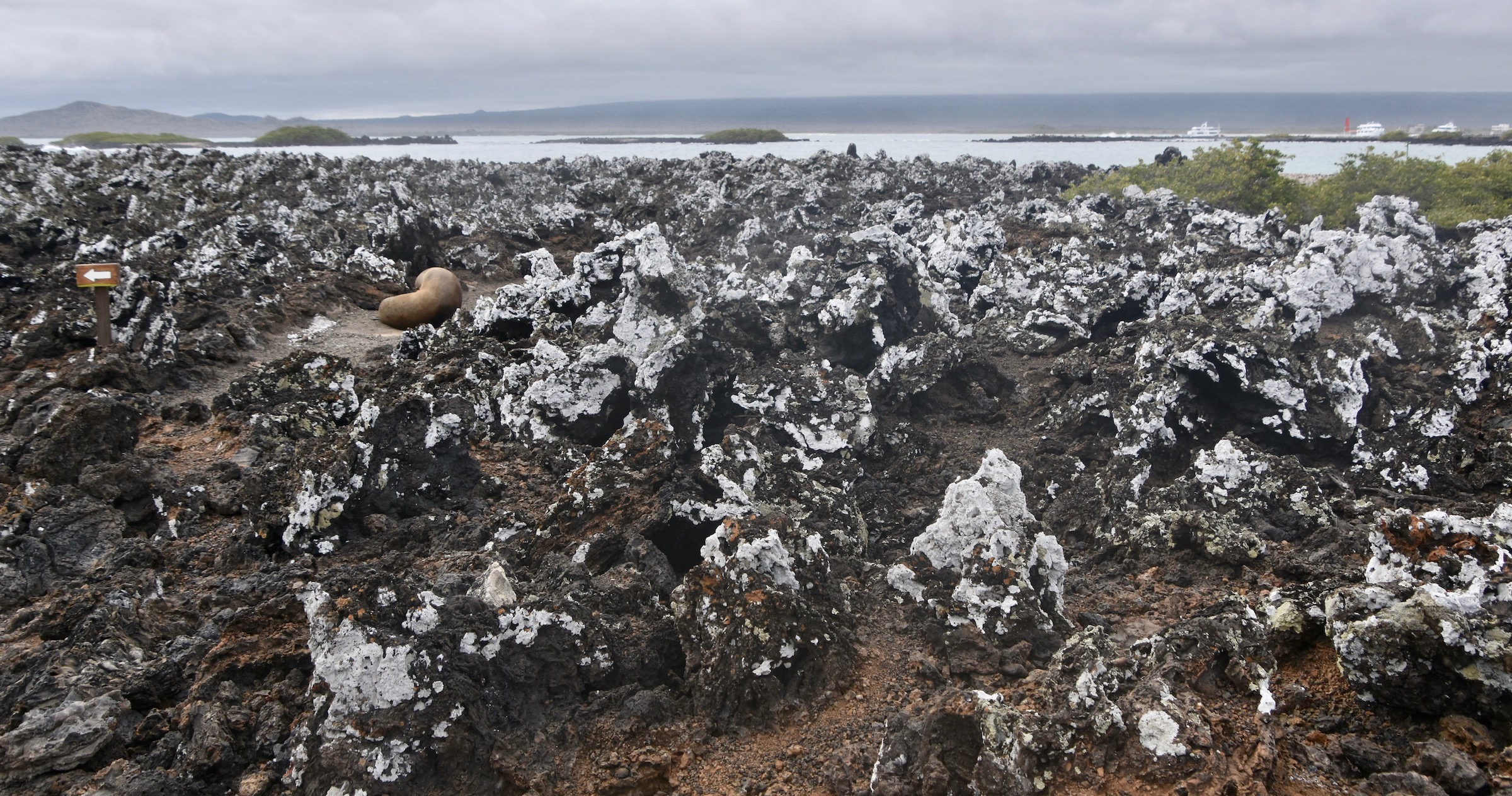
Just as the finches differ from island to island, so do the lava lizards with this Isabela variety quite different looking than the ones we saw on San Cristobal.
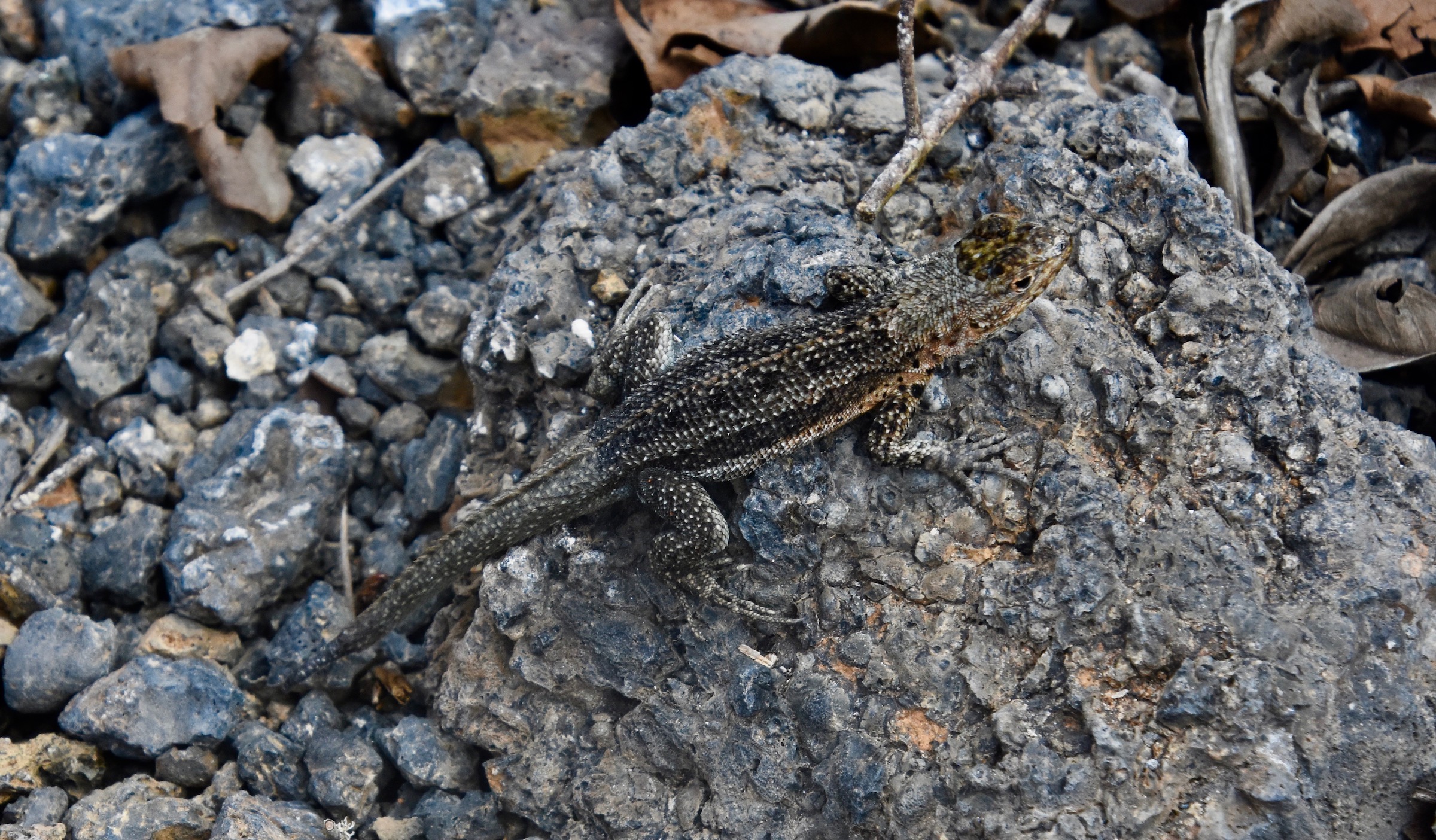
Pablito now leads us to the most interesting spot on Tintoreras Islet, Shark Alley. This is a collapsed lave tube that is apparently the perfect spot for sharks to do some R&R.
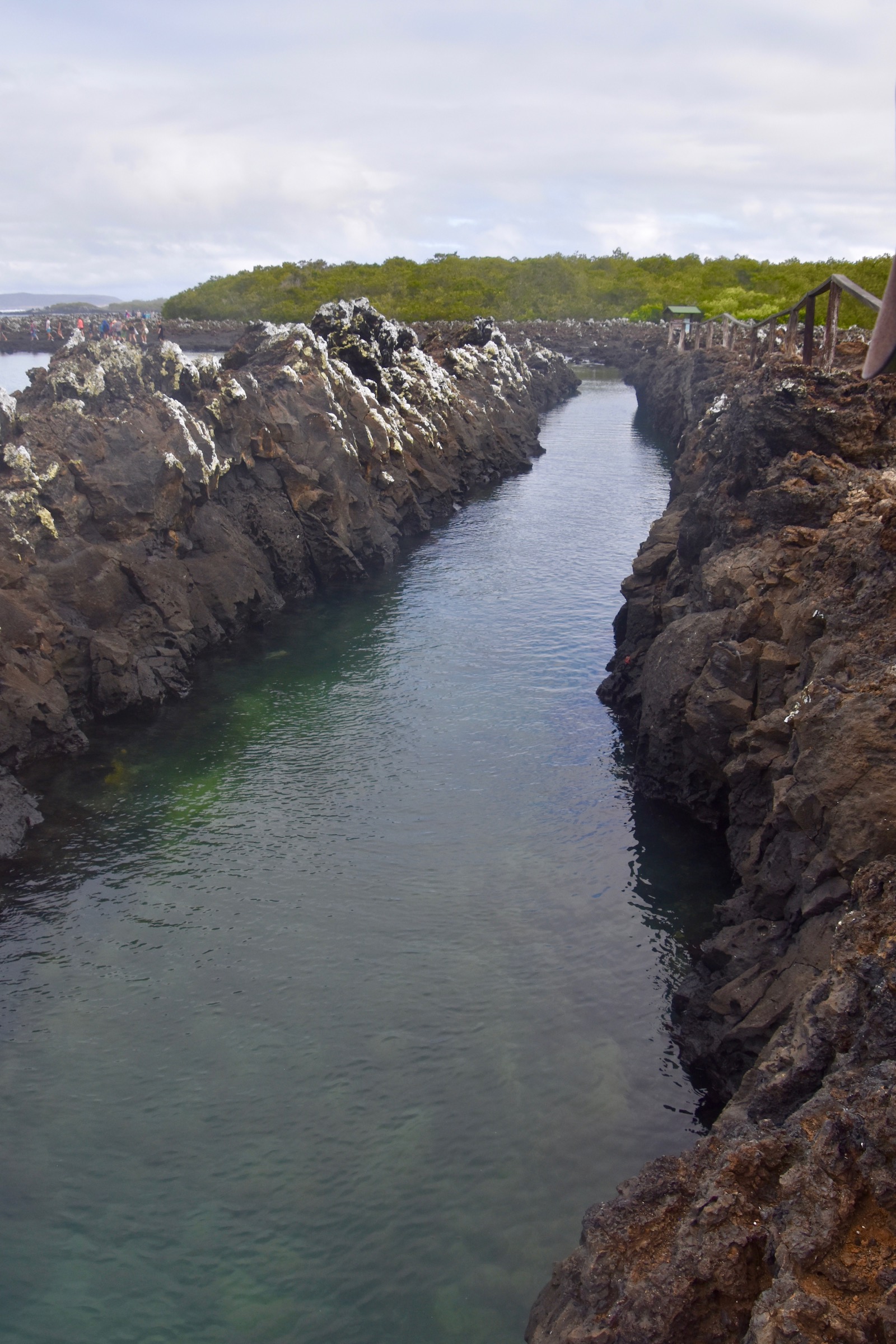
However, before we see any sharks there is a young sea lion that is having a ball tormenting a puffer fish. While the sea lion could not eat the puffer fish because of the sharp spikes on its body, it could push it around with its nose like a beach ball, much to the annoyance of the puffer fish. Maybe I’m just easily amused, but I found this fascinating to watch and now I know why sea lions used to be great circus performers balancing beach balls on their noses. They come by it naturally.
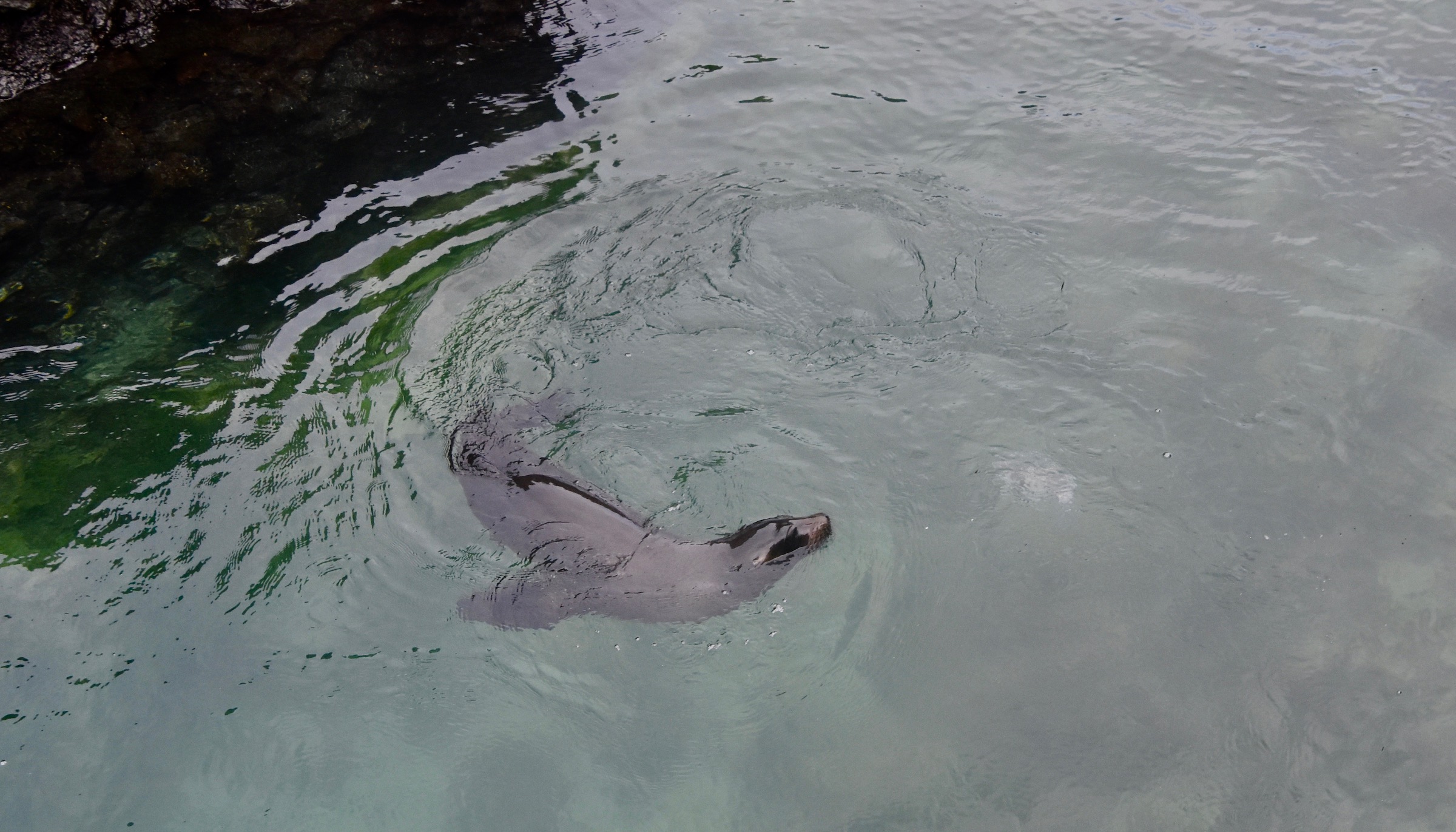
And yes there were sharks. Lots of them. These are white tip reef sharks, which unlike their oceanic cousins which Jacques Cousteau considered the most dangerous sharks, are quite docile and don’t include humans in their diet. Alison and I learned this first hand in Bora Bora only a few months ago when we swan among them.
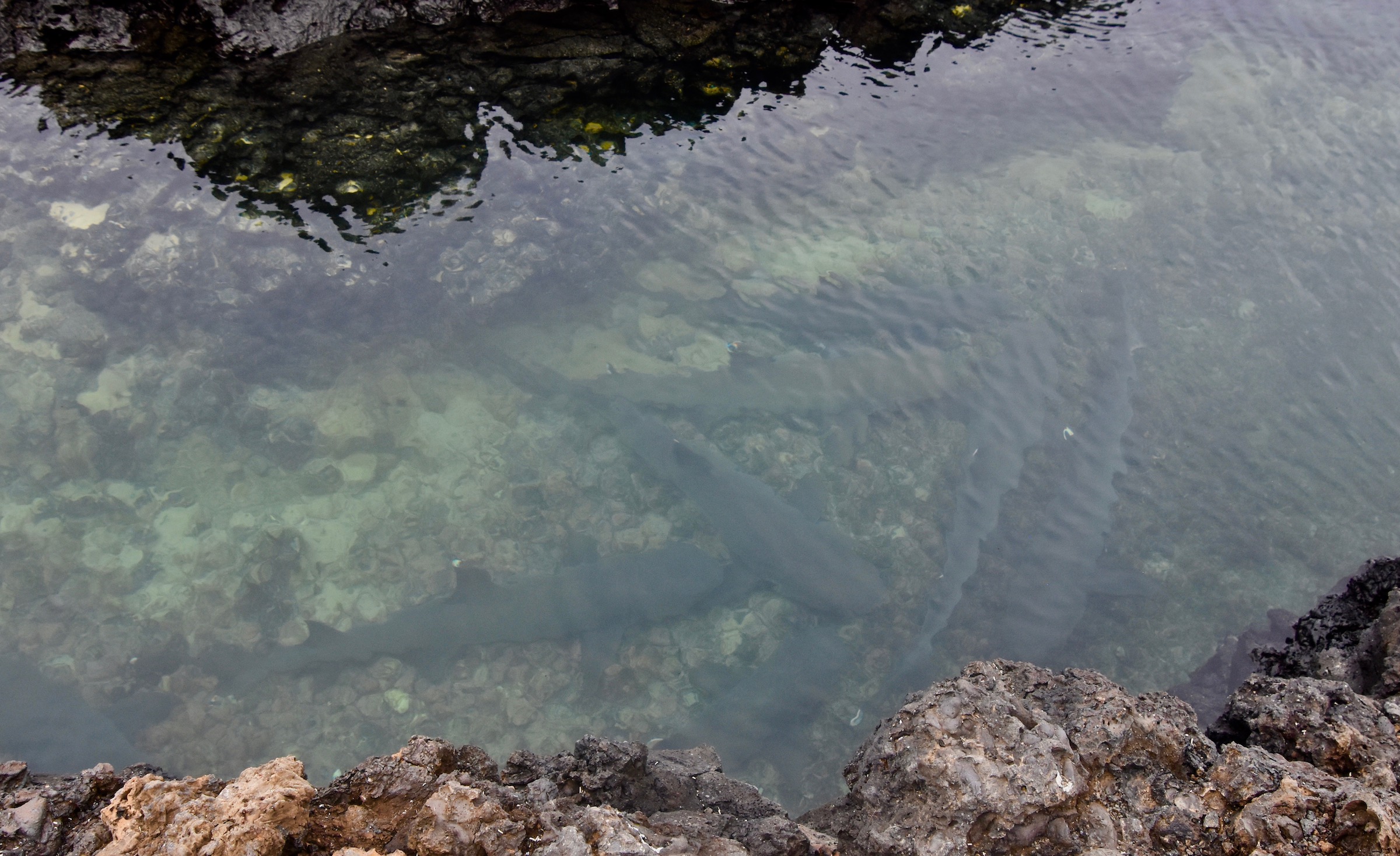
I’m told we’ll have the opportunity to go through one of these shark tunnels on Isabela in the next day or two. Stay tuned.
Although Puerto Villamil has fewer than 2,ooo residents it has an amazing variety of restaurants. For our evening meal we dined at Gracias Madre, a Mexican restaurant which had perfect margaritas.
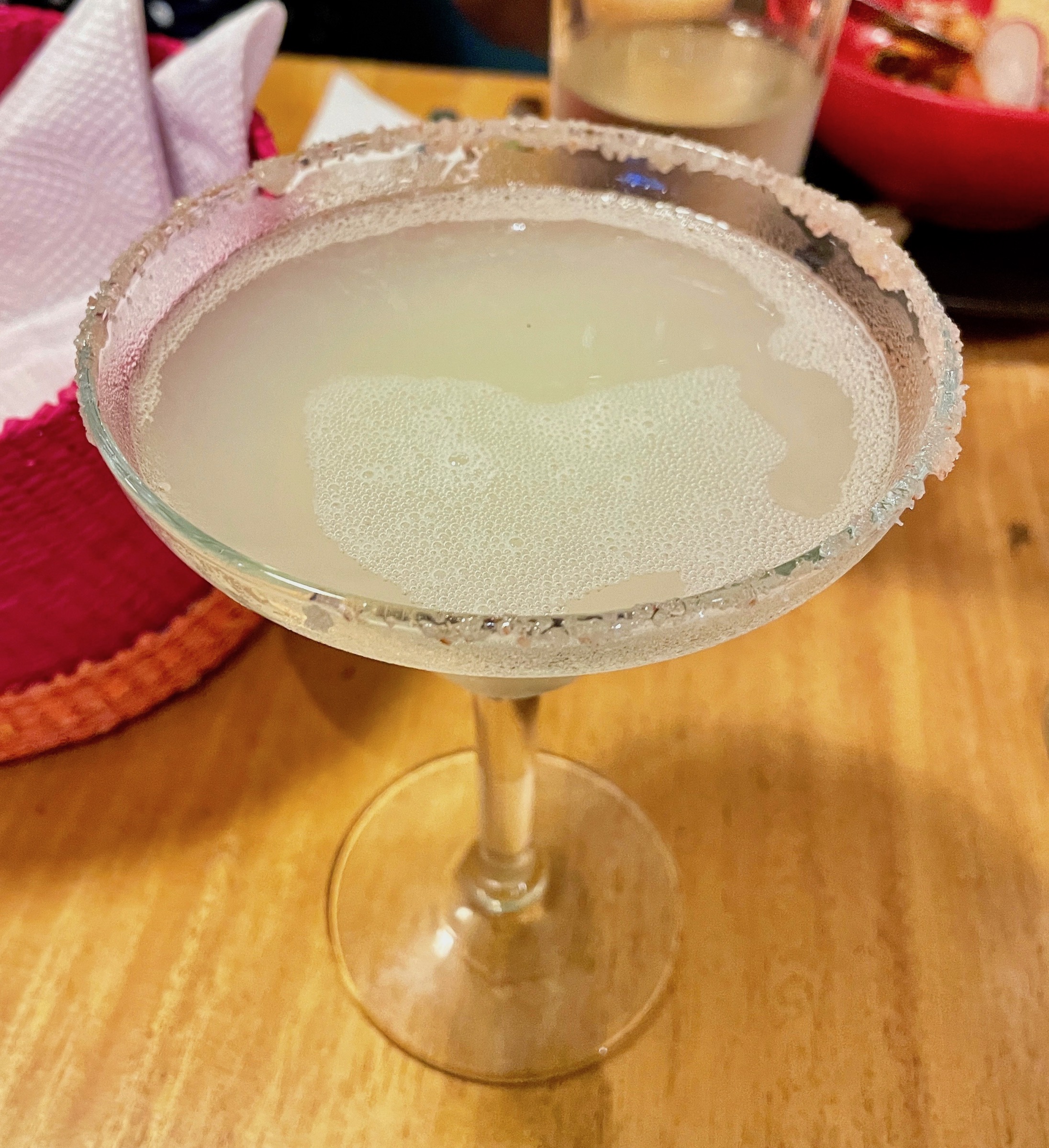
And wonderful ceviche.
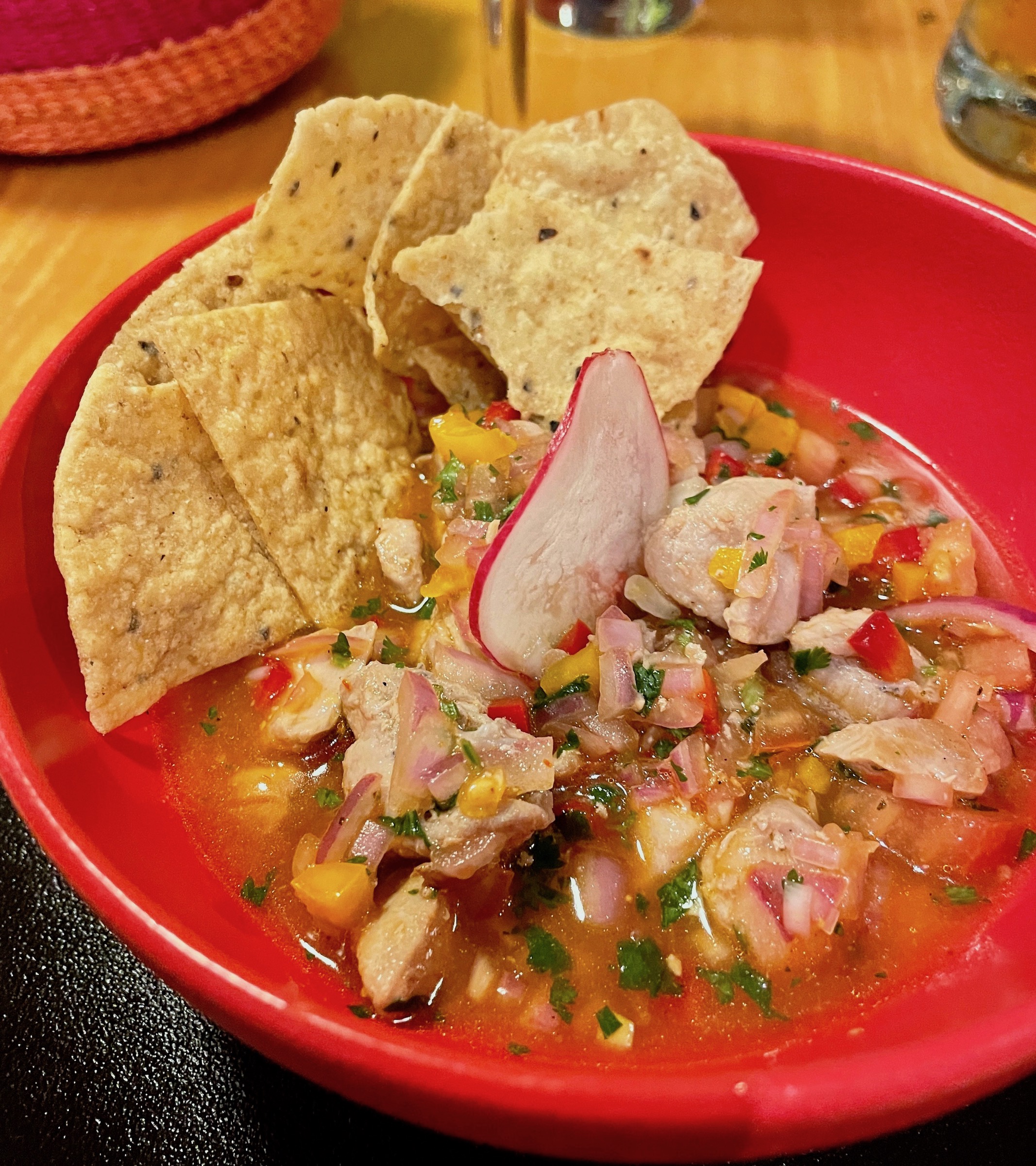
Life is good on Isabela and in the next post we’ll go looking for more of the species that the Galapagos is famous for. I hope you’ll join us.

